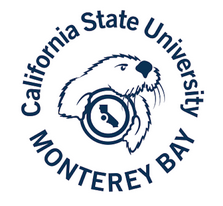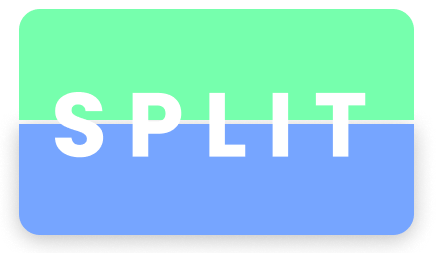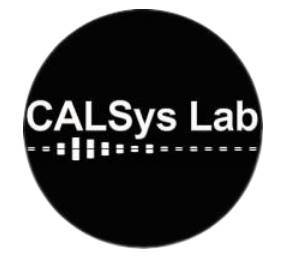School of Computing and Design
Computer Science Capstone Festival Spring 2023
Friday May 19, 2023
12:00PM - 2:00PM
Location: BIT 104
Transformation Station

Justin Dick | Dylan Leonard | Pradnya Chavan | Jason Jock Casareno
A browser accessible game that aims to reduce the confusion that students often face when learning about matrix transformations. This subject can be quite complex, with many moving parts involved in math equations. By providing a fun and interactive visual representation of matrix transformations in a 3D space, the game helps students better understand the concepts and gain a deeper knowledge of how matrices affect objects within a 3D environment.

mbgrd2gltf contribution to MB-System
Kyle Dowling | Julian Fortin | Jesse Benavides | Nicolas Porras Falconio

Monterey Bay Aquarium Research Institute's (MBARI) 'MB-System' is a software package consisting of programs which can manipulate, process, list, or display swath sonar bathymetry data. We have migrated a standalone program (mbgrd2gltf) into MB-System that converts the bathymetry data (.grd) into the required format (.gltf) for displaying 3D renders of the underwater terrain.

Professional Networking Platform
Ulysses Zamora | Alec Ortega | Rajarshi Chatterjee | Andrea Sanchez

David Eloy Saavedra | Matthew Peters | Matthew Lencioni | Anitha Rajamohan

We worked on a startup Professional Networking Platform that enables users to form meaningful connections by vetting one another. This vetting feature was designed to help women succeed in the corporate world and is what sets apart our work from other networking platforms. We produced a proof of concept website after working on building the UI, database, and framework of the company's idea from proof of concept to a minimal viable product.

Forest Fire Detection
Nico Hartojo | Prajwal Pisal | Allyson Rivera | Dante Moon

Build a machine learning algorithm to detect the presence of fires on cameras from ALERT Wildfire. Using this algorithm we will then build a website that will send notifications to users when a fire is detected.

Medical Procedures Detection
Esha Sawant | Joshua Gonzales | Sid Ghorpade

Documentation of medical care administered to patients by emergency responders is time-consuming. Ottersoft’s answer to this problem is a wearable that detects procedures being performed from hand motions. Our capstone project was to develop a machine-learning pipeline to classify motion data collected from wearables and log the start time for the procedures. The input is motion data collected from sensors and the output is the predicted procedure by the learned model for each time segment in the data.

Incidents & Disasters Monitoring and Alerting (Guardian)
Aaqib Seliya | Derek In | Christopher Raya | Dylan Ignacio

Dylan McKee | Ignacio Gramajo | Ryan Gutierrez | David Gonzalez

Guardian is a website dedicated to providing California residents news relating to fires, extreme weather, earthquakes, and traffic incidents without the hassle of maintaining multiple accounts across several other news sources. The website is able to pull information from selected sources and centralize them into a single source for quick and easy access. User's signed up with Guardian are also capable of receiving notifications to possibly dangerous incidents happening in a selected area.

Panafold Capture
Irvine Martinez | Russell De Vera | Emran Arsala | Ana Alfaro-Garcia | Nathan Savonen

Create an app where users can enhance their collaborative workspaces and engage their clients through 360 images.

Introduction to IoT
Devansh Sharma | Tristan Williams | Sebastian Vera | Nathan Hughes

SafePi is an open source home security system composed of a Raspberry Pi and a cloud hosted web server. Users will be able to attach sensors to their doors, windows, and cabinets so they can keep track of their valuables with our web UI that can display sensor status in real time. Ultimately, SafePi provides users an affordable and extensible solution without the expensive contracts associated with traditional home security systems.

Plagiarism Detection and Active Protective Measures
Michael Silva | Elijah Barsky-Ex | Hal Halberstadt | Julian Diaz | Luz Violeta Robles | Chinmay Nayak

Plagiarism Detection is a set of web applications which primarily allows educational professionals to upload documents like exams in order to find out if those documents have been found online. It also will allow them to find similarities between two student submitted documents to see if those students collaborated and watermark existing documents to prevent malicious upload of copywritten material.

Power to the People
Jose Castro | Ulises Romero | Justin Thon | Liliana Valencia

Anisha Jadhav | Diego Vega | Ben Woodward | Rohit Kannaujiya

Lumos is an Android app that enables neighbors to share resources in a time of need. During a power outage, some may have generators, solar power, battery backups, etc. to keep their refrigerated food from going bad. Lumos allows these households with extra space in their fridge/freezer to help neighbors in need, keeping their food or refrigerated medication from spoiling. Communal resource sharing efforts can go farther than just refrigerator space, too, as neighbors can advertise WiFi/Internet access, outlets for smart phone charging, extra flashlights and candles, and even portable generators.

LinkIt: Making sense of disparate data
Nyra Usi | Sayali Badole | Alejandro Ramirez | Prerana Kharat |

Ethan Garnica | Andrew Liddle | Alexander Verdugo | Rishabh Shetty

LinkIt is a tool that automates the most labor-intensive manual tasks associated with data integration by examining disparate data and rationalizing the schema. LinkIt provides an extensible framework so that the range of data it understands can be expanded over time – perhaps even by non-programmers.

DAVE - dKomplex Automated Virtual Engineer
Frank Perez | Stephanie Hernandez | Nrupaja Vartak | Luis Morales |

Aryana Buelna | Leonardo Villalobos | Ashish Savani | Colby Medeiros | Monica Aguilar

The dKomplex Automated Virtual Engineer (DAVE) is a Microsoft Power Platform Canvas App that utilizes the Azure Open AI (ChatGPT) API to aid dKomplex staff in their day-to-day work. Using company data, employees can type questions about a wide range of topics, such as questions about a previous Teams meeting, and receive accurate answers. Questions can be saved for future reference.

Class Scheduler
Ezequiel Hernandez-Simon | Gavin Avendano | Wade Costa | Daniel Figueroa

Class Scheduler is a web application that allows administrators to create an optimized schedule based on given resources and constraints (classrooms, courses, instructors, restrictions, and references) through the usage of a genetic algorithm. The generated class schedule will meet all strict requirements and will maximize all faculty preferences.

Get Up and Move (GUM)
Pradeep Pansare | Zihao Xu | Jasmine Moua | Ryan Pheang |

Mursal Mousumi | Kevin Nguyen | Khushi Sharma | Erik Morris

Get Up and Move (GUM) is a program that encourages people to be a little more active throughout their day whether they are on their computer or phone. Individuals are allocated six timeslots throughout the day to follow exercises. For each time, notifications are sent to remind them to get up and move with videos of guided exercises.

Racecats
Phillip Giourousis | Marco-Antonio Vega | Gerardo Lopez-Saldana | Ula Trabanino

A 3D racing game with a 2D feel and an emphasis on car mechanics. The game includes a story mode about cats trying to save a shelter from shutting down through race winnings and an arcade mode that allows the player to race on any track. It also features car maintenance through point and click gameplay where the player changes tires and oil.

Next-Gen IDS/IPS
Jaden Bussard | Chris (John) Johnson | Sanchit Kumar | Hunter Smith

This IDS/IPS aims to analyze network traffic and data to detect suspicious patterns that suggest an attack. Packet inspection will allow it to uncover malicious activities and conduct behavioral analysis to identify unusual behavior. Through the training and use of machine learning algorithms the IDS/IPS can make better decisions on how to deal with potential threats.

Split
Vighnesh Prabhu | Abraham Robles Martinez | Joshua Gonong | William Villantay | Joseph Arredondo

Split is an application that lets it users split their bills or receipt amongst their family and friends by just taking a a snapshot of the bill or receipt. Also it allows users to send money p2p while letting the users create an in-app wallet for investment ( proof of concepts ).

CardBoard - Credit Card Rewards-Maximizing Assistant
Vinayak Iyer | Divyansh Singh | Yash Patel | Paul (Phuc) Nguyen

CardBoard is an innovative solution designed to optimize credit card rewards for everyone. The app provides an all-in-one reward-maximizing experience that enables users to effortlessly calculate and track rewards for every purchase in any category, at any time. Built using Flutter SDK and XCode, CardBoard is available on both Android and iOS platforms. The app analyzes user-selected cards and presents the rewards in the most optimal order, ensuring maximum savings for every purchase.

Frankenweb / Measuring the Efficiency of the Operations of Sorting Algorithms

We're using the Draculog tool to measure the energy cost of particular operations related to sorting algorithms, namely comparisons, shifts, and swaps. This work will allow us to predict the approximate relative energy costs of different sorting algorithms based on estimates of low-level operations. This work will also allow us to find where algorithms differ in energy efficiency, and would help give people information on energy efficiency when they are programming.

Application of Generic Algorithm to Meeting Scheduling

The focus of this research is to find efficient ways of allocating meeting times for groups of people making up an organization. We will be comparing different methods of creating optimized meeting schedules based on availability times of people within an organization, including hand calculations, a backtracking algorithm, and a genetic algorithm. This work will allow us to compare the efficiency and reliability of different algorithms for a schedule optimization problem, as well as create a program to schedule group meetings more effectively.

Automatic Identification of New Criminal Hacking Data Resources on the Dark Web

The cybersecurity research community relies on datasets harvested from the dark web via collection pipelines. As a piece of an overall pipeline, this project is a system that automates the collection and assessment of new websites, removing the need for human analysts. The system utilizes previously collected data to determine if a new website has substantial resources about criminal hacking. All new data collected will be added to a database available to cybersecurity professionals to identify potential cyber threats.

Comparing Energy Efficiency of Trees Across Programming Languages

The problem we’re addressing is the comparison of the energy efficiency of binary search tree and AVL tree implementations in Python, Java, and C++. Specifically, we’ve been investigating the impact of programming languages on energy efficiency. We were also interested in seeing how energy efficiency is influenced by the size of the trees. We’ve explored these questions by developing implementations of BST and AVL with consistent design philosophies in Python, Java and C++ for the purpose of comparison. We are using Draculog, a tool that measures the energy consumption of a computer while running a given program, to run several tests on the tree implementations in the three programming languages. These tests include creating trees of random data of various sizes given a size and RNG seed. We also run a specified number of searches using a mix of data that will be present and absent from the tree. Using the comparisons of results from these tests for the three implementations, we’re analyzing the patterns that have emerged.
